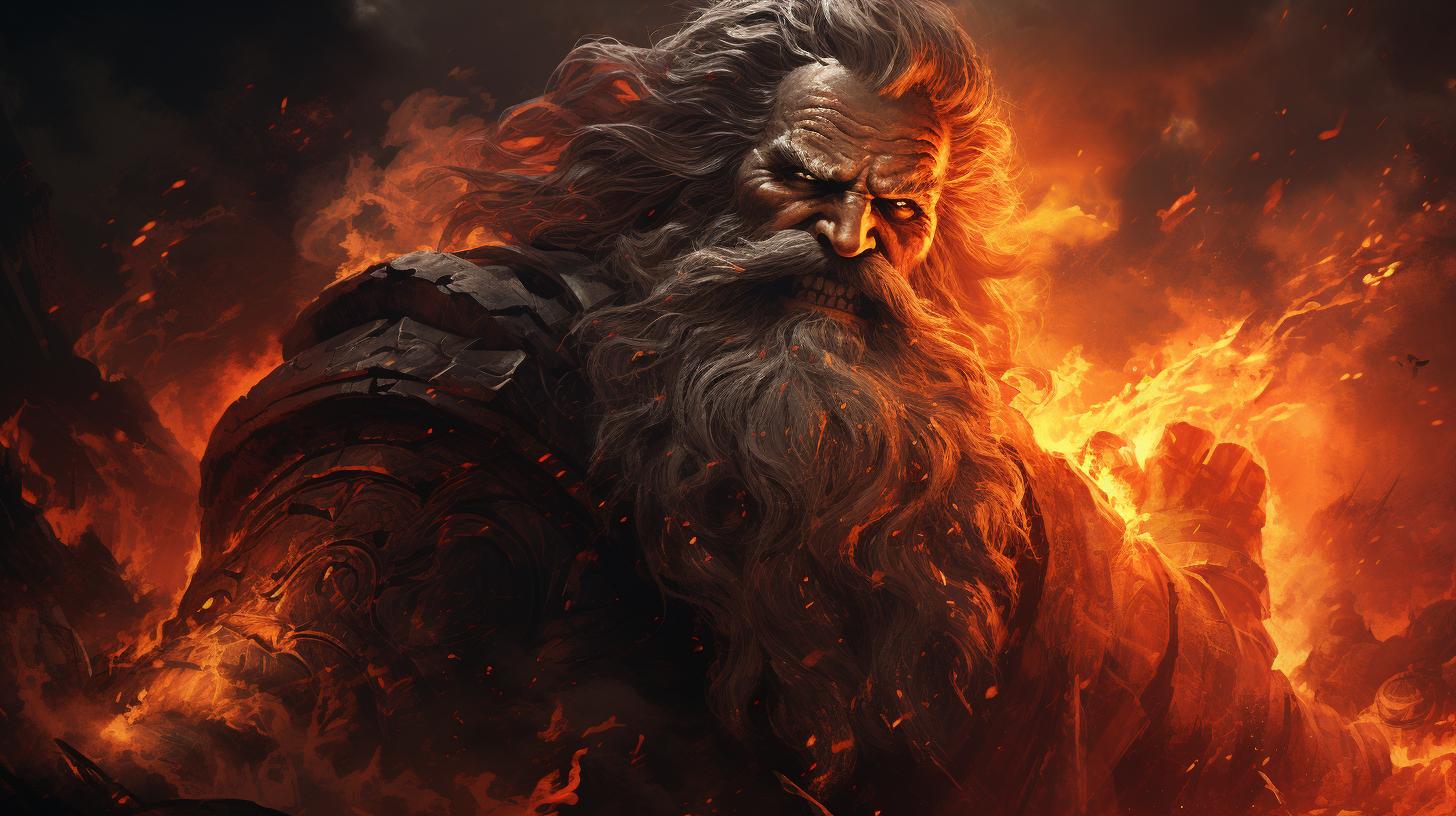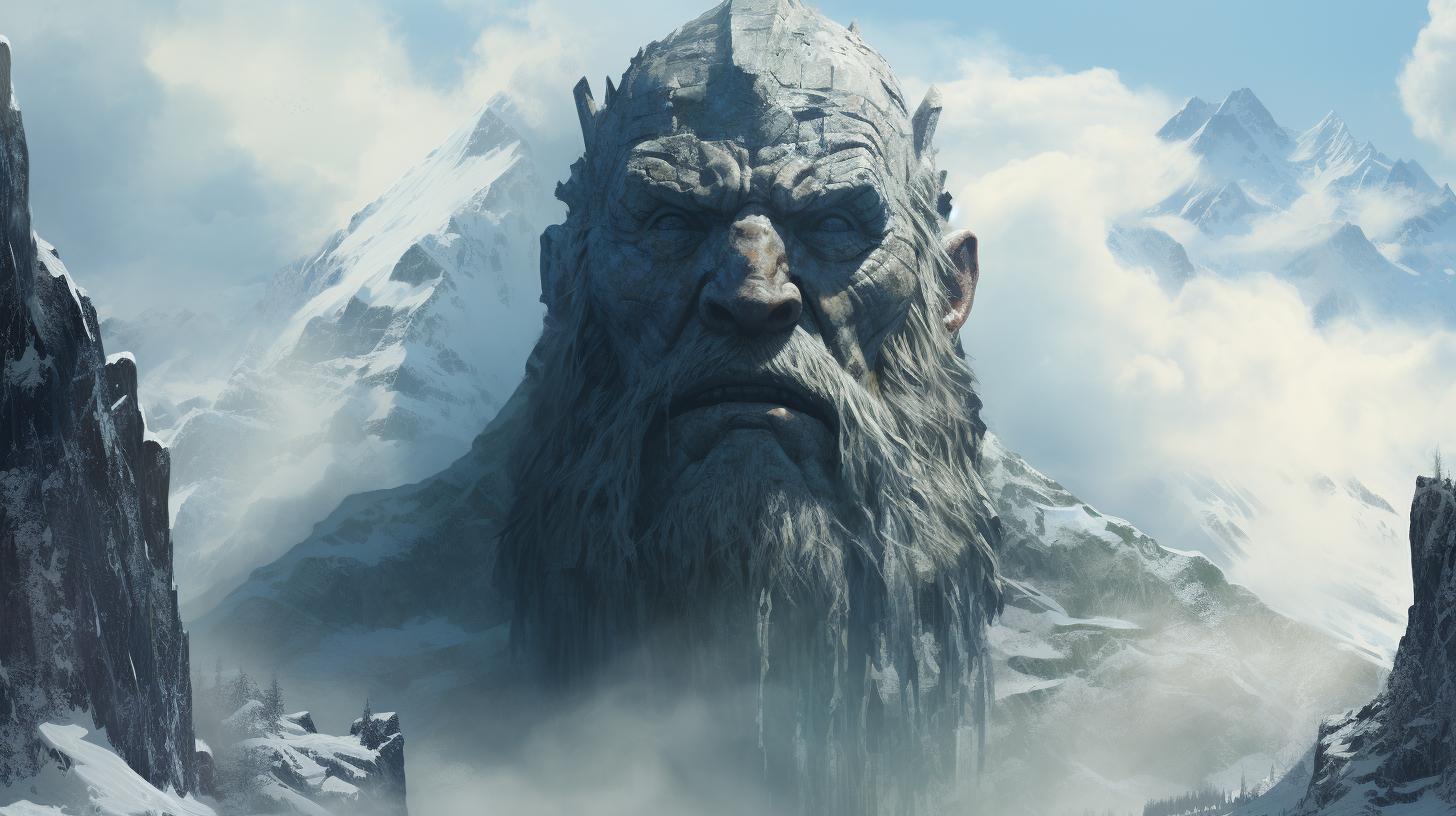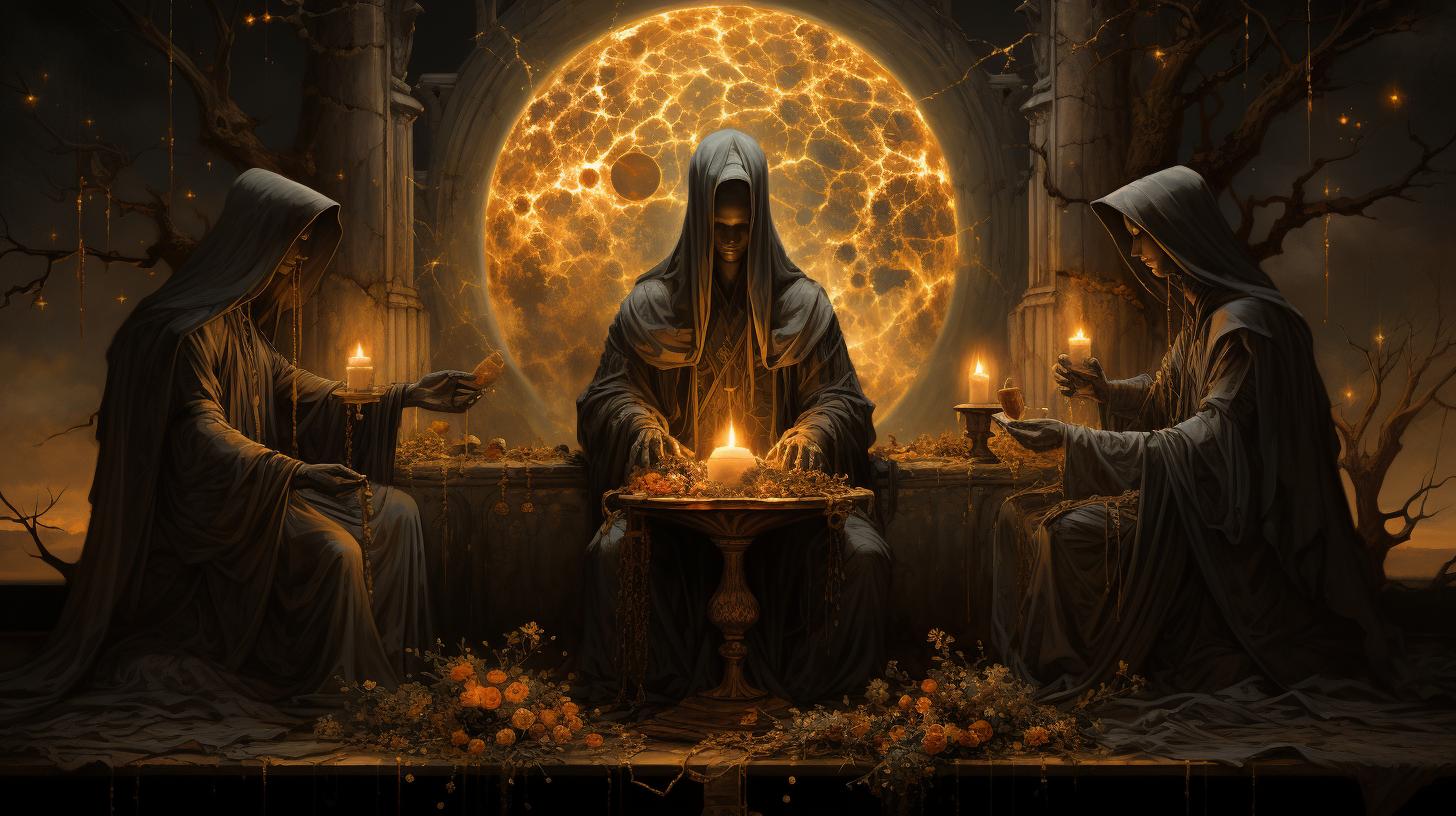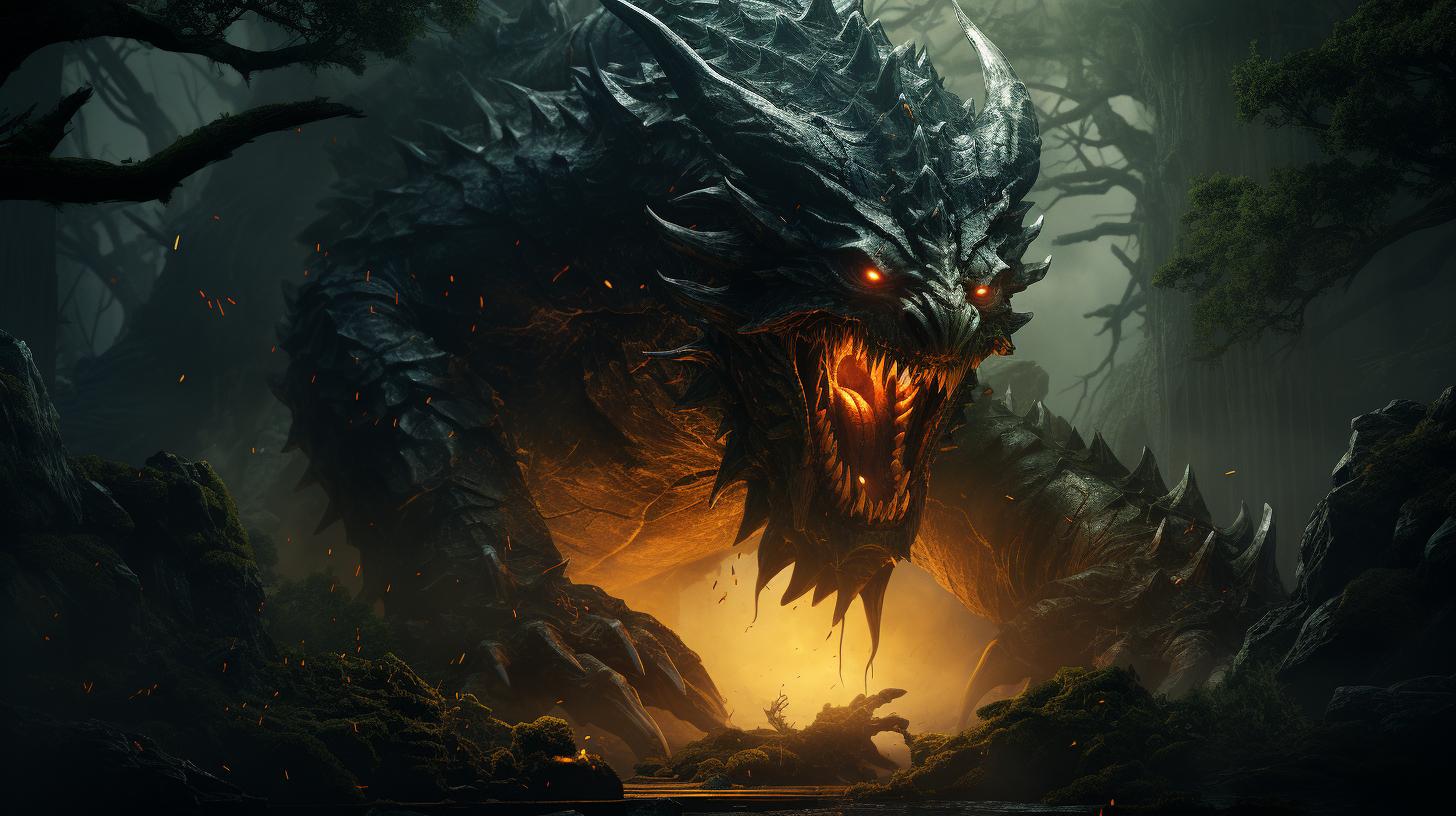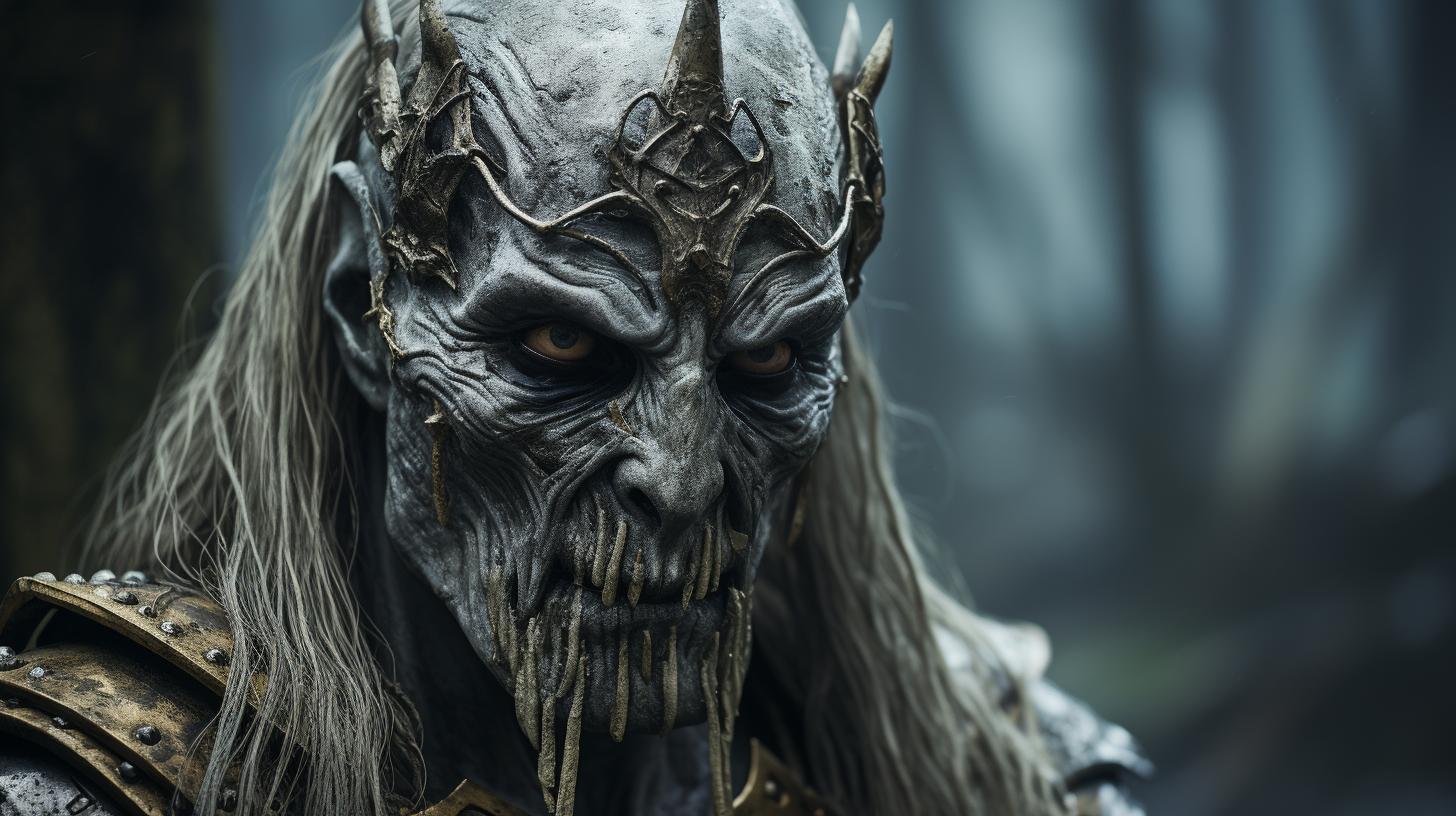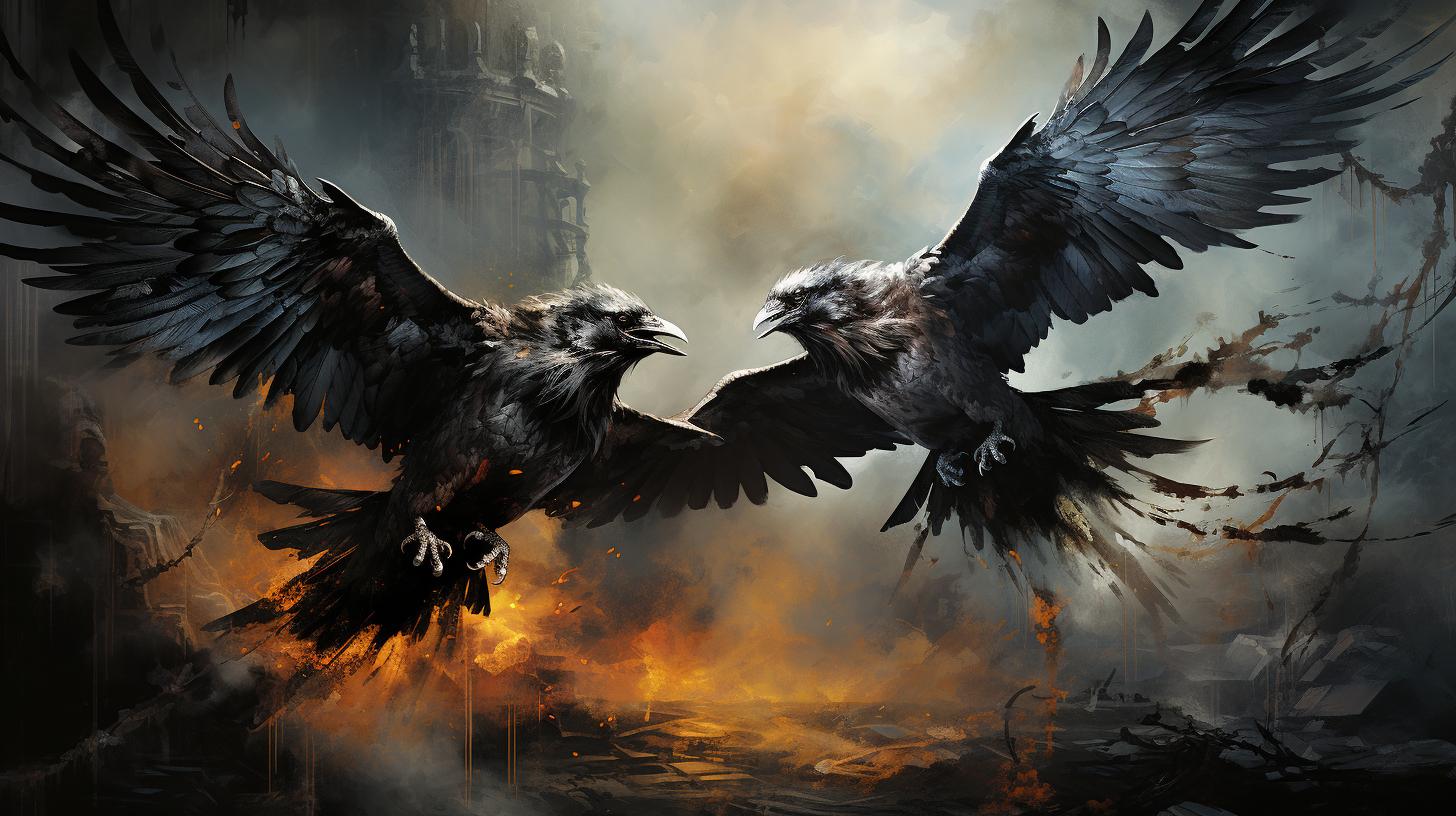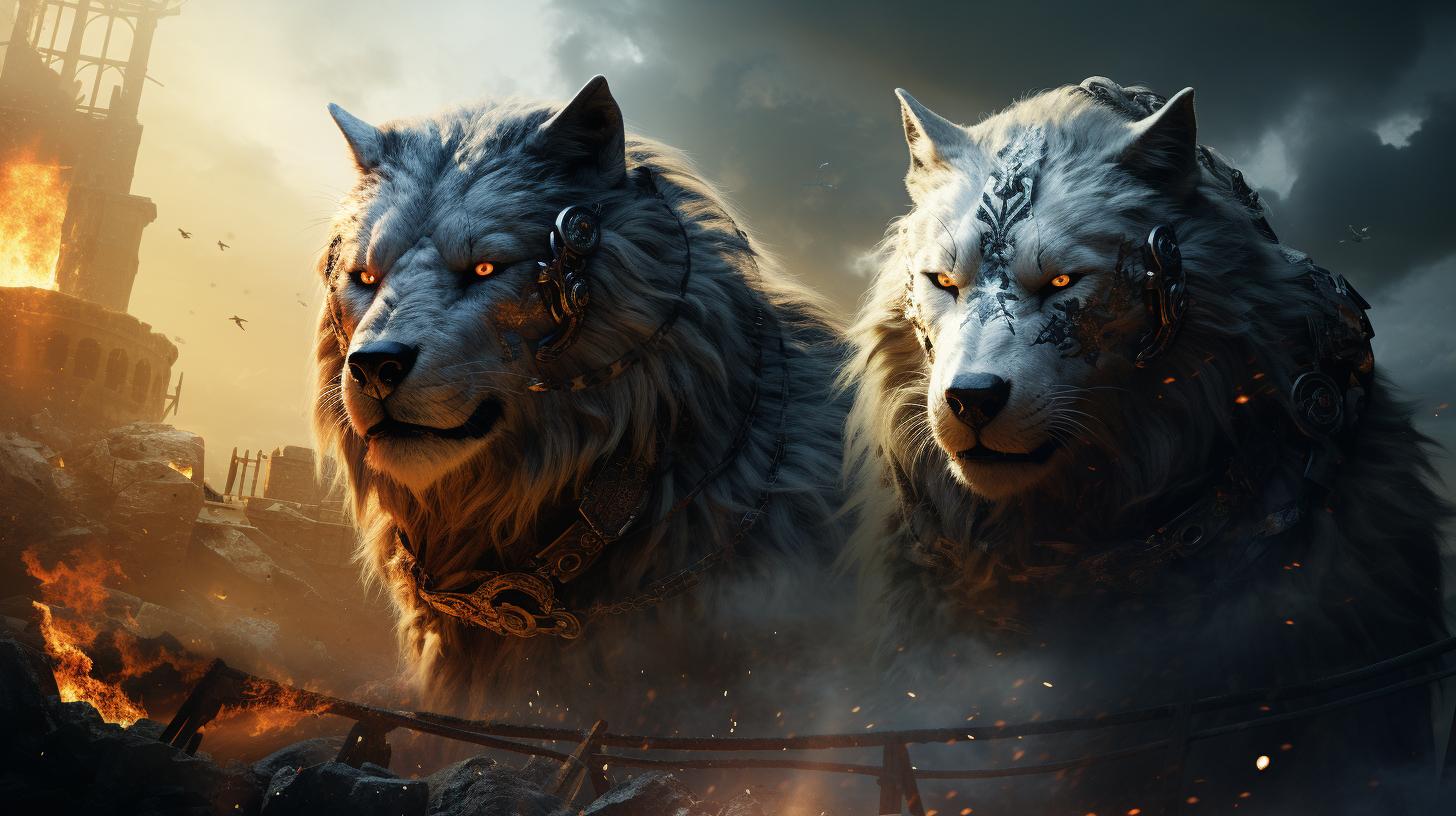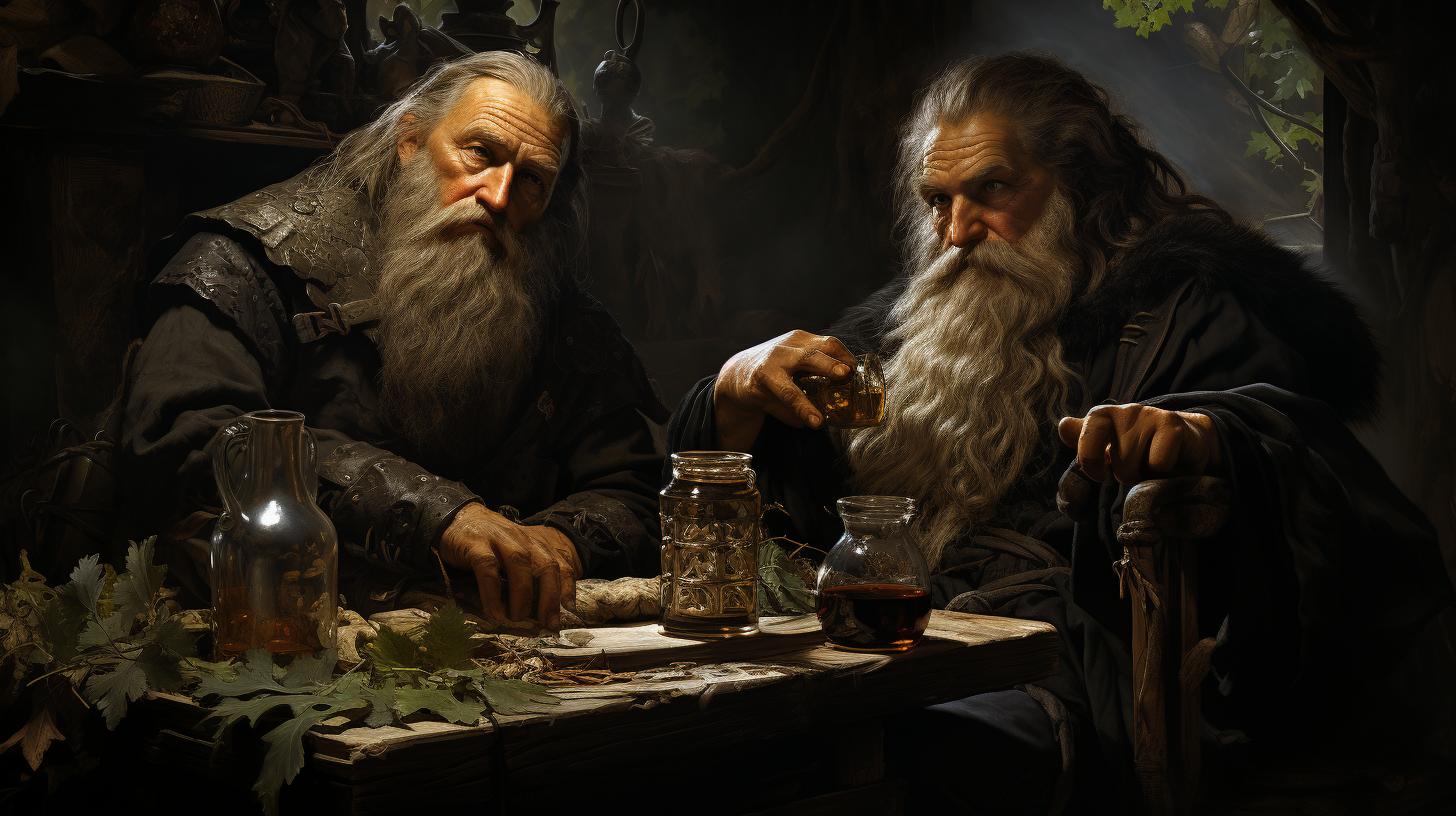Surt Norse Mythology: Unveiling the Fiery Giant’s Role in Ragnarök
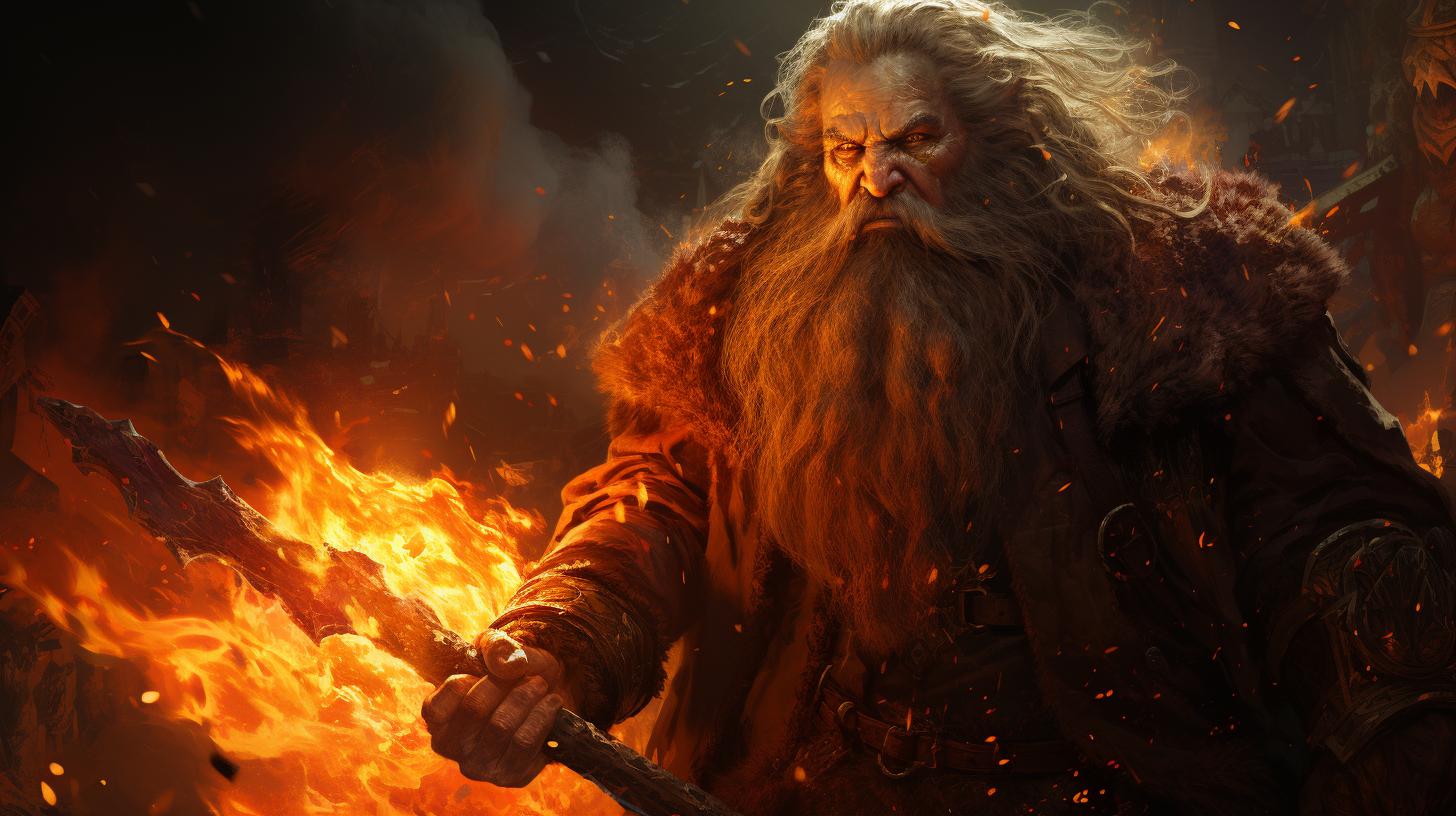
Surt, the fiery giant of Norse mythology, holds a crucial role in the cataclysmic event known as Ragnarök. As the ruler of Muspelheim, the realm of fire, he embodies destruction and the end of the world.
With his unmatched control over fire and immense strength, Surt wields a flaming sword feared by all. Leading the army of fire giants, he clashes with the gods in an apocalyptic battle, resulting in the world’s ultimate demise.
Alongside his connections to other mythical figures, Surt’s legacy continues to be explored in various modern interpretations.
The Role of Surt in Norse Mythology
Surt, the fiery giant of Muspelheim, holds a significant role in Norse mythology, particularly in the epic event known as Ragnarök. This section explores various aspects of Surt’s role, including his identity as the ruler of Muspelheim, his association with fire and destruction, and his immense power and abilities.
Surtr: The Fiery Giant of Muspelheim
Surtr, also known as Surt, is a formidable figure in Norse mythology, representing the embodiment of fire and ruling over the fiery realm of Muspelheim. As the fire giant, Surtr is a fearsome and influential deity, intrinsically linked to the catastrophic events of Ragnarök.
Surtr’s Association with Fire and Destruction
Surtr’s association with fire is central to his character and role in Norse mythology. He is portrayed as the wielder of flames, capable of summoning and controlling fire at will. This connection to fire symbolizes his destructive nature and the ultimate role he plays in bringing about the end of the world.
Surtr’s Immense Power and Abilities
Surtr is renowned for his immense power and exceptional abilities. As a giant of fire, he possesses unparalleled strength and endurance. His fiery sword, often depicted as engulfed in flames, is believed to possess the ability to cut through anything.
Surtr’s commanding presence and control over fire make him a formidable opponent in the impending battle of Ragnarök.
Surtr’s Flaming Sword: Symbolism and Significance
The flaming sword held by Surtr in Norse mythology carries deep symbolism and holds great significance within the context of his character and the events of Ragnarök. This powerful weapon is depicted as a fearsome blade enveloped in flames, representing Surtr’s association with fire and destruction.
The flaming sword serves as a visual representation of Surtr’s immense power and serves as a metaphorical extension of his fiery dominion over Muspelheim, the realm of fire. Its flames embody the destructive force that Surtr wields, emphasizing his role as the agent of chaos and catalyst for the end of the world.
The significance of Surtr’s flaming sword extends beyond its appearance. It is believed to possess supernatural qualities that make it an exceptionally formidable weapon, capable of cutting through anything. This attribute highlights Surtr’s undeniable strength and reinforces his status as a formidable adversary to the gods and their allies.
Furthermore, the flaming sword represents the final judgment and cleansing that Ragnarök brings upon the Nine Worlds. It symbolizes the ultimate reckoning, as Surtr wields it to bring about the destruction and rebirth of the cosmos.
The flames that engulf the sword also serve as a metaphor for the transformative power of destruction, clearing the way for a new cycle of existence.
Overall, Surtr’s flaming sword holds deep symbolism, representing his association with fire, his destructive power, and his pivotal role in the cataclysmic events of Ragnarök.
Its fiery nature and the significance it carries emphasize the impending doom and the profound impact Surtr and the battle he leads against the gods have on the Norse mythology’s apocalyptic narrative.
Surtr and Ragnarök: The Final Battle
The final battle of Norse mythology, known as Ragnarök, is a cataclysmic event in which Surtr, the fiery giant, plays a pivotal role. As the leader of the fire giants, Surtr engages in a fierce battle against the gods, bringing about the ultimate destruction of the world.
Surtr and the Battle Against the Gods
The battle between Surtr and the gods is an epic clash of immense proportions. Surtr, with his formidable strength and powerful flames, stands as a formidable adversary to the gods. His relentless assault tests the gods’ abilities, leading to a devastating confrontation.
The Cataclysmic Events of Ragnarök
The events of Ragnarök escalate as Surtr’s fiery presence engulfs the realms. The forces of chaos are unleashed, resulting in the destruction of the physical and spiritual worlds. Surtr’s flames consume everything in their path, bringing forth a new era of darkness and rebirth.
Surtr’s Role in Bringing About the End of the World
Surtr’s ultimate purpose is to fulfill the prophecy of Ragnarök, where the world is destined to end in flames. As the leader of the fire giants, Surtr spearheads the destruction, heralding the demise of gods, creatures, and realms alike.
His flaming sword becomes the instrument of annihilation, cutting through all that stands in his way.
Surtr’s Connection to Other Norse Myths and Figures
Surtr, the fiery giant of Norse mythology, is not only known for his role in Ragnarök but also for his intriguing connections to other mythical beings. Let’s explore Surtr’s significance as the father of fire giants, his relationship with Sinmara and Surtsey, and his influence on other gods and beings.
Surtr as the Father of Fire Giants
Surtr’s legacy extends beyond his status as a fearsome giant. In Norse mythology, he is considered to be the father of the fire giants, who serve as his loyal and powerful offspring.
These fire giants, born from the flames of Muspelheim, share their father’s affinity for destruction and the inferno.
Surtr’s Relationship with Sinmara and Surtsey
While Surtr’s wife is not mentioned in traditional Norse mythology, modern adaptations sometimes refer to a female figure named Sinmara as his spouse. Sinmara, associated with the earth and the underworld, is believed to be the consort of Surtr.
Another significant connection is Surtr’s daughter, Surtsey, who represents the creative and vitalizing aspects of fire. She embodies a stark contrast to her father’s destructive nature.
Surtr’s Influence on Other Gods and Beings
Surtr’s immense power as the ruler of Muspelheim and his association with the fiery end of the world make him a figure feared by both gods and beings in Norse mythology.
While Surtr’s primary role lies in leading the fire giants into battle against the gods during Ragnarök, his presence and reputation also exert an influence on other Norse gods and creatures.
His fiery aura and daunting sword are often seen as symbols of imminent destruction and chaos.
Surtr’s connections to other Norse myths and figures serve to further enhance the complexity and depth of his character.
The intertwined relationships between Surtr, the fire giants, Sinmara, Surtsey, and his impact on other gods and beings reveal the intricate web of connections within Norse mythology.
Interpretations and Adaptations of Surtr in Modern Culture
Surtr in Literature and Art
Surtr, the fiery giant of Norse mythology, has captivated the imaginations of authors and artists alike in modern times.
His imposing figure and association with destruction make him a compelling character to explore in various works of literature and art.
Many authors have drawn inspiration from Surtr’s role in Ragnarök, weaving his character into epic tales of apocalyptic battles and world-ending events.
His fiery nature and fearsome sword have become iconic symbols of chaos and devastation.
In the realm of art, Surtr has been visually represented in different styles and mediums. From intricate paintings depicting his battle against the gods to sculptures capturing his menacing presence, artists have sought to bring this formidable figure to life through their creations.
Surtr’s Legacy in Contemporary Norse Mythology Studies
Surtr’s significance extends beyond literature and art; he also holds a prominent place in contemporary Norse mythology studies. Scholars and enthusiasts continue to analyze and interpret his character, seeking a deeper understanding of his role and symbolism.
Researchers delve into ancient texts and explore the connections between Surtr and other mythical figures, examining the impact of his fiery persona on the broader Norse mythology. They explore the consequences of his actions during Ragnarök and the implications for the gods and the world.
Additionally, Surtr’s legacy has sparked discussions on themes such as destruction, rebirth, and the cyclical nature of existence. Scholars debate the enduring relevance of Surtr’s story in today’s context, exploring how it reflects broader human concerns and societal anxieties.
- The portrayal of Surtr in modern literature and art showcases his enduring appeal and fascination.
- Contemporary Norse mythology studies continue to unravel the layers of Surtr’s character and his significance within the larger mythological framework.
- Surtr’s story prompts discussions on themes of destruction, rebirth, and the cyclical nature of existence.
Surtr, with his fiery presence, continues to leave an indelible mark on modern culture, inspiring creative works and igniting intellectual discourse that explores the deep-rooted myths of Norse tradition.
.

